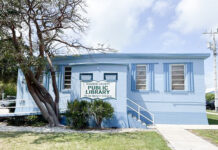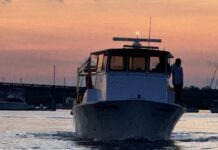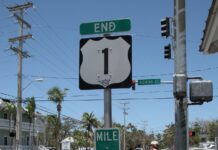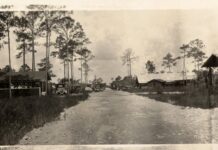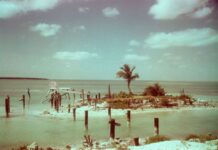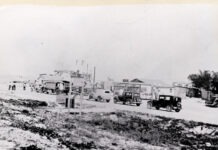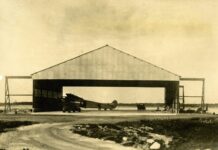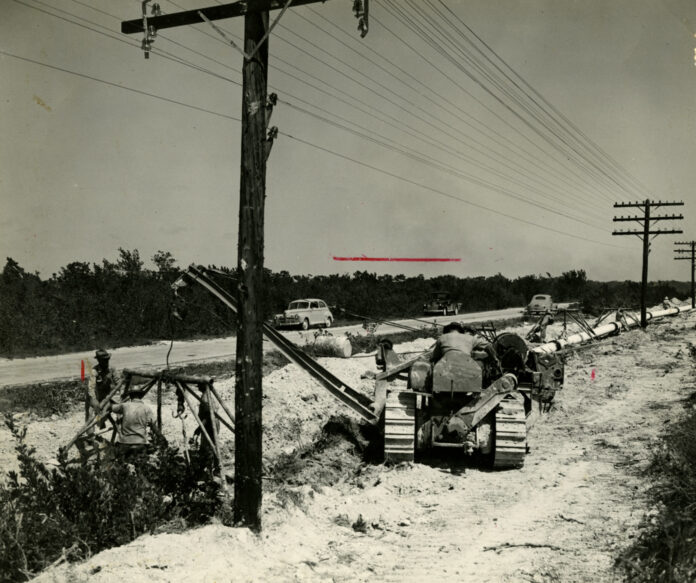
Back in March, there was a disruption in the flow of fresh water through the Florida Keys when a series of cracks erupted in the pipes buried in the Upper Keys. Work on the pipeline is still underway as miles of the old pipes are being replaced by new ones.
The fresh water provided to the residents and visitors of the Florida Keys comes from the Biscayne Aquifer. We are lucky because, in terms of quality, it is some of the highest-rated water in the country. The Florida Keys Aqueduct Authority, the entity in charge of our water, operates from a wellfield in a pine rockland forest west of Florida City on the mainland.
A reliable supply of fresh water took time to arrive because of the challenges associated with linking a string of islands like the Keys to the mainland. Before the pipeline was buried along the island chain in the early 1940s, fresh water arrived by boat, via Henry Flagler’s train, or it was trucked in over the highway. Families also used cisterns to collect rainwater for day-to-day living.
The use of cisterns in the Florida Keys dates back to the pioneer communities that developed in the years following the signing of the Adams-Onis Treaty, which transferred ownership of the Spanish territory to the United States — and frankly, for those who called the islands home while it was still considered Spanish property. Cisterns dating back to the early 1800s can be found at Indian Key Historic State Park, though they can no longer hold rainwater.
Even after the 1935 Labor Day Hurricane, the most powerful storm to make a North American landfall, cisterns were built into the foundations of the Red Cross or Hurricane Houses constructed in response to the Category 5 hurricane. Those cisterns were designed to collect enough freshwater during the rainy season to get a family through the dry season.
The arrival of a freshwater pipeline through the Florida Keys brought welcome relief. Its appearance had a lot to do with World War II. The U.S. Navy base at Key West needed access to more fresh water than could be produced by a desalination plant on the island. While the project was all about supplying the island chain’s major communities with fresh water, the objective was also to create a conduit capable of delivering gallons to the Navy base to satisfy the thirsty nature of the military machine.
When the project was completed, an 18-inch freshwater pipeline linking the mainland to Key West began delivering a consistent supply down the island chain. The first drops flowed down the new pipeline and arrived in Key West on September 22, 1942. The conduit followed the original right-of-way of Henry Flagler’s Over-Sea Railroad.
The considerable expenditure was shared on state and national levels, with the U.S. Navy footing two-thirds of the bill. The project was not just about the flow of water but also about reconstructing portions of the Overseas Highway. In addition to a significant freshwater source, the Navy needed to transport heavy equipment to its base. The lone conduit connecting the base to the mainland needed updating to get those vehicles and the loads they carried to Key West.
In 1942, the Overseas Highway still entered Key Largo from the mainland over Card Sound. In the Lower Keys, the highway was still hugging the coastal edges of Sugarloaf, Geiger and Boca Chica Keys. The road had some tight turns that were fine for cars, trucks, and even Greyhound buses but were a little too tight to accommodate the heavy equipment the Navy needed to transport down the highway. Also, some wooden bridges connecting the islands could not bear the extra weight of the military loads.
To improve military access to Key West and the overall driving experience, the Overseas Highway was upgraded for the third time. When the third version opened to traffic in 1944, it had been straightened out a bit and shortened. At this point, the 18-Mile Stretch and the Jewfish Creek Bridge were incorporated into the highway. The “Stretch” offered a more direct entry into the Keys than the Card Sound route offered and cut away 14 miles from the road to Key West. The new and improved highway also bypassed the coastal route along Sugarloaf Key, shaving off three more highway miles.
The Overseas Highway has seen improvements since 1944, most notably with the additions of the bridge at Bahia Honda in 1972 and the Seven Mile Bridge in 1982. The freshwater pipeline has also seen upgrades. In 1980, the 18-inch transmission pipe running from the wellfield through Tavernier was increased to a 36-inch pipe. Between Tavernier and Upper Sugarloaf Key, the pipeline was refitted with a 24-inch pipe. From there to Key West, the pipe remained 18 inches in diameter.
As the pipes continue to age, what seems clear is that more upgrades are needed to accommodate the increasing demands of those living in and visiting the Florida Keys. In the meantime, we will just keep our fingers crossed that those upgrades will occur before the next break in the aging pipes and not as an emergency response after the fact.











